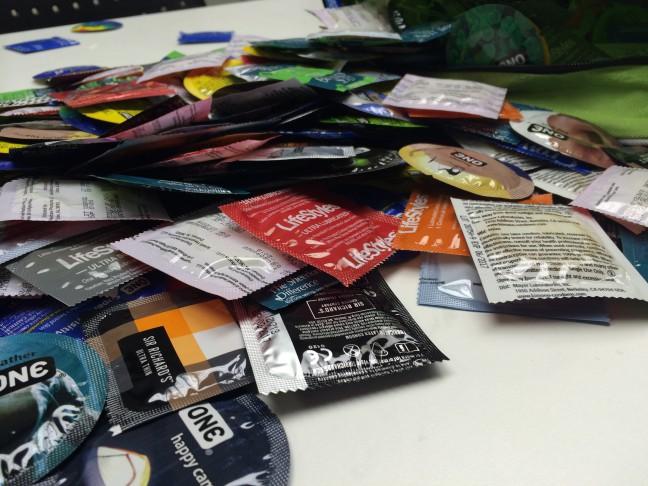Experts and laypeople alike have debated the existence of female ejaculation for years; even Aristotle wondered about the existence of “female sperm.” But squirting is hardly the stuff of fantasies: approximately 10 to 40 percent of female bodies experience female ejaculation.
During orgasm, those capable of squirting experience an involuntary outpouring of fluid from the urethra ranging anywhere between 30 and 150 mL. For some, this fluid appears milky white; others report squirting enough clear liquid to soak through sheets.
The equally elusive G-Spot plays a role in female ejaculation, but not all female bodies necessarily have a G-Spot. Of course, pornography uses lights, camera, props, editing and some very skilled actors to popularize squirting in the adult entertainment industry. While these scenes may not always contain authentic lady cum, rest assured that plenty of people with vaginas experience the awesome release of ejaculation.
Tips for a Good Gush
People enjoy female ejaculation for all sorts of reasons. Letting the flood gates open often creates a powerful sense of release for squirters; their orgasms may feel more complete when accompanied by ejaculatory fluid. Partners appreciate the additional lubrication, validation in their sexual prowess, and perhaps even the sight, smell and taste of a gusher’s orgasm. Many squirters enjoy the pleasurable loss of control associated with ejaculation. Sometimes people are surprised by their ability to ejaculate; however, if we know about our tendency to squirt, we might want to give fair warning before we super-soak a very surprised partner.
Strengthen your PC muscles. The pubococcygeus muscles help push ejaculatory fluid out of the body. In order to find these muscles, stop the flow of pee during urination, or insert a finger into the vagina and attempt to squeeze it. Once you have found these muscles, hold the contraction for three seconds and release. Repeated contractions can improve orgasm, no matter how wet.
Locate the G-Spot. This key ingredient to squirting can be found using a G-Spot stimulator toy or a willing partner. Simply lie on your back and invite a partner (or yourself) to insert two fingers into the vagina while making a “come hither” motion. The G-Spot should feel like a small bump of tissue. It can only be found after arousal, however, so ramp up that foreplay first — 20 to 40 minutes work for most female-bodied folk. Still having trouble? Get off first; sometimes the G-Spot is easier to find after orgasm.
Add clitoral stimulation. Multiple forms of stimulation create various levels of arousal, increasing chances of ejaculation. Plus, the clitoris never gets enough attention anyway.
Go pee before you get it on. If you’re still worried about unexpected golden showers, make an extra effort to urinate before sexual activity.
Don’t hold it in. Many female bodies fear urination during sex so much that when they sense ejaculation during orgasm, they assume that it is pee and hold back. Instead, when you feel yourself going over the falls, push into your pelvic region and allow yourself to feel that release.
Relax. As with any new sexual activity, extra pressure to perform will do nothing but hurt your chances. Allow yourself to have fun and enjoy whatever pleasure your sex life has to offer. If you cannot squirt, do not fear. Keep trying, and maybe it will happen when you least expect it!
The Science of Squirting
Progress in understanding female ejaculation began with Havelock Ellis, who theorized that female ejaculation was analogous to semen and came from the Bartholin’s glands (two pea-sized glands responsible for lubricating the vagina). Enter Ernest Gräfenberg, who watched women flick the bean in the name of science and concluded that female ejaculation was not the same as lubrication and occurred more frequently with stimulation of an erogenous zone on the wall of the vagina — later known as the G-Spot. Additional studies compiled results supporting the conclusion that female ejaculate is different from urine and comes from the Skene’s glands (the equivalent of a female prostate).
French researchers curious about the nature of female ejaculate recruited seven women who report ejaculating a large amount of liquid — as in, a glass of the stuff — at orgasm. Participants provided a urine sample and had emptiness of their bladders confirmed by ultrasound scans. Then, by themselves or with the help of a partner, they were stimulated to orgasm and ejaculation.
Researchers performed ultrasound scans of the pelvic area before and after ejaculation. The first and final scans showed empty bladders; however, just before squirting, the bladder was full. Most of the fluid ejaculated contained a small amount of prostatic-specific antigen (PSA), which is produced in men by the prostate gland. In female-bodied people, the Skene’s glands produce PSA. This similarity indicates that male anatomy might not be as unique as we once thought; perhaps all genders share elements of the same structures, including the potential for ejaculation.
Clearly further research needs to be performed regarding squirting. Like lots of other fluids in our bodies, female ejaculate is perfectly natural, normal and does not indicate anything sick or wrong with us.














